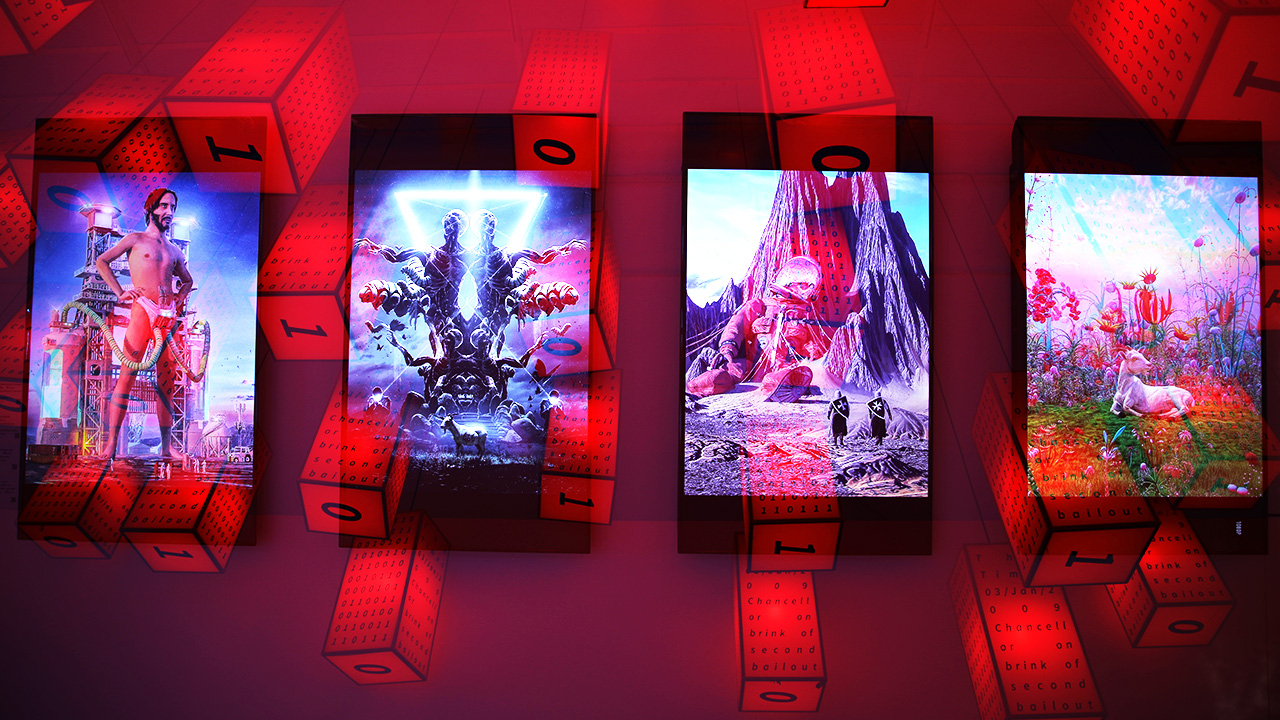The layman view that NFTs are nothing more than highfalutin JPEG files may be ridiculed by crypto-enthusiasts, but arguing the technologists’ corner was no laughing matter for the organizers of the world’s first major NFT art exhibition.
Back in September 2020, months before everything became an NFT and celebrity fanfare shattered our collective amnesia on cryptoart, Block Create Art (BCA), a Chinese crypto art company and budding marketplace, was planning a show that traced the genre’s evolution by staging historically significant works alongside those of contemporary digital artists. The goal was to generate hype for an emerging art form and demystify a niche subject replete with jargon.
Beeple’s landmark sale at Christie’s certainly helped in the exposure department, a stroke of remarkably fortuitous timing that BCA capitalized on by “borrowing” Beeple works from Metapurse, a crypto fund and big-time NFT collector. But here the organizers faced a conundrum, philosophical in nature and of potentially profound art-historical significance: how could they prove to audiences that the JPEGs mounted on pristine HD screens were the real JPEGs?
A crypto quandary called for a crypto solution, one that may lay the digital groundwork for future exhibitions. Metapurse typed up a smart contract on the Ethereum blockchain stating that between March 26 and April 9, BCA had permission to screen the 20 works in question. Cynical visitors could alleviate doubts by scanning codes that summoned up additional artwork information including the hash value, essentially verifying authenticity.
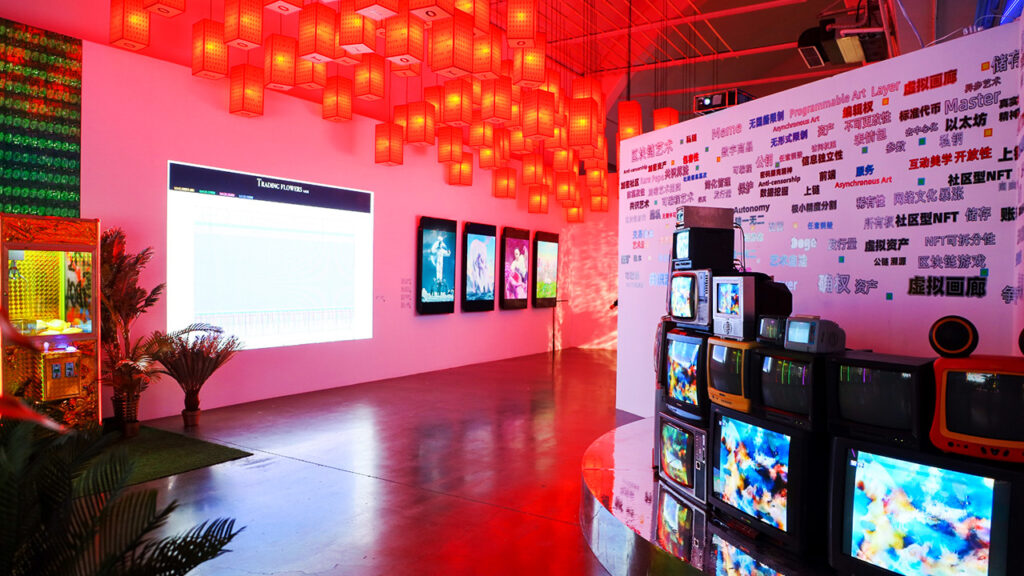
Intended to be an edifying experience for visitors, Virtual Niche included hands-on, educational highlights aimed at demystifying the crypto space. Image: UCCA Lab
BCA weaved this type of interactivity throughout Virtual Niche: Have You Ever Seen Memes in the Mirror?, which debuted at Beijing’s UCCA Lab in March, moved onto Shanghai’s Jingart for a short April stint, and has a permanent home on Cryptovoxels, a virtual world powered by the Ethereum blockchain.
The exhibition was divided by red and blue lighting, with the red space devoted to hands-on experiences, such as a game explaining coin mining — fortunately less time-consuming and more energy-efficient than the real thing — claw machines with crypto(ish) souvenirs, and the chance to create one’s own Crypto Punks-esque digital identify, which players could both print out and receive by email.
In blue-light space, BCA brought together works by more than 60 artists, some established and global others young and local. Again, curation centered on education.
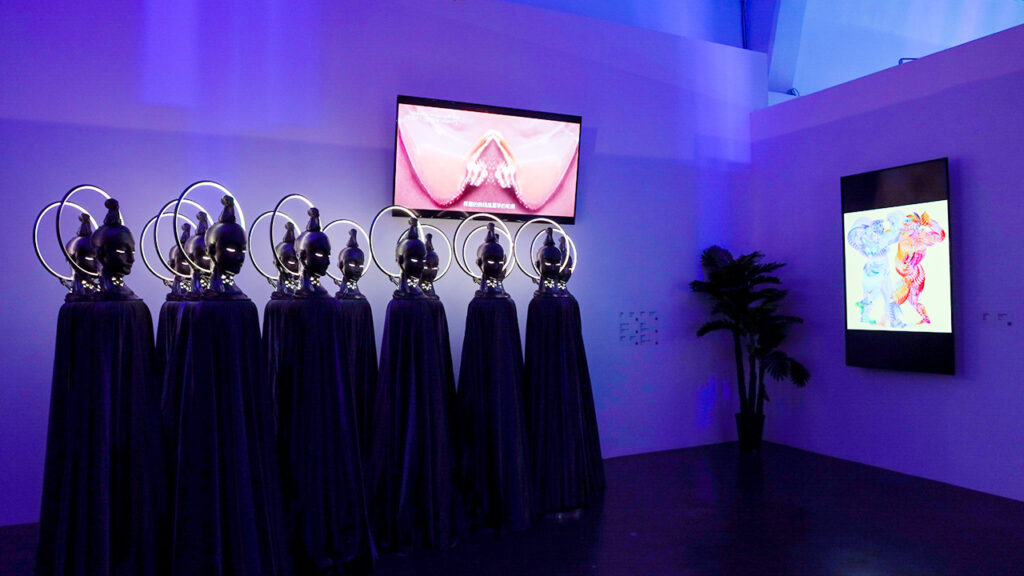
The exhibition’s blue-lit zone showcased the works of digital artists such as Dabeiyuzhou’s installation (left) and Wujian‘an’s “Boxing Men” NFT (right). Image: UCCA Lab
“We divided crypto art into three categories,” BCA’s He Siyu tells Jing Culture & Commerce. “First, digital art minted on the blockchain; second, art related to blockchain and cryptocurrency; third, artwork that uses blockchain as a medium in artistic creation.”
Beyond Beeple — a phrase that could well become shorthand for whatever comes next in the realm of art NFTs — Virtual Niche highlights included one of Robert Alice’s 40 Portraits of a Mind coin-shaped canvases, each inscribed with bitcoin source code, encryption randomized self-portraits by Chinese artist Ellwood, and a bank of now obsolete cryptocurrency mining computers that gave physical presence to the intangible.
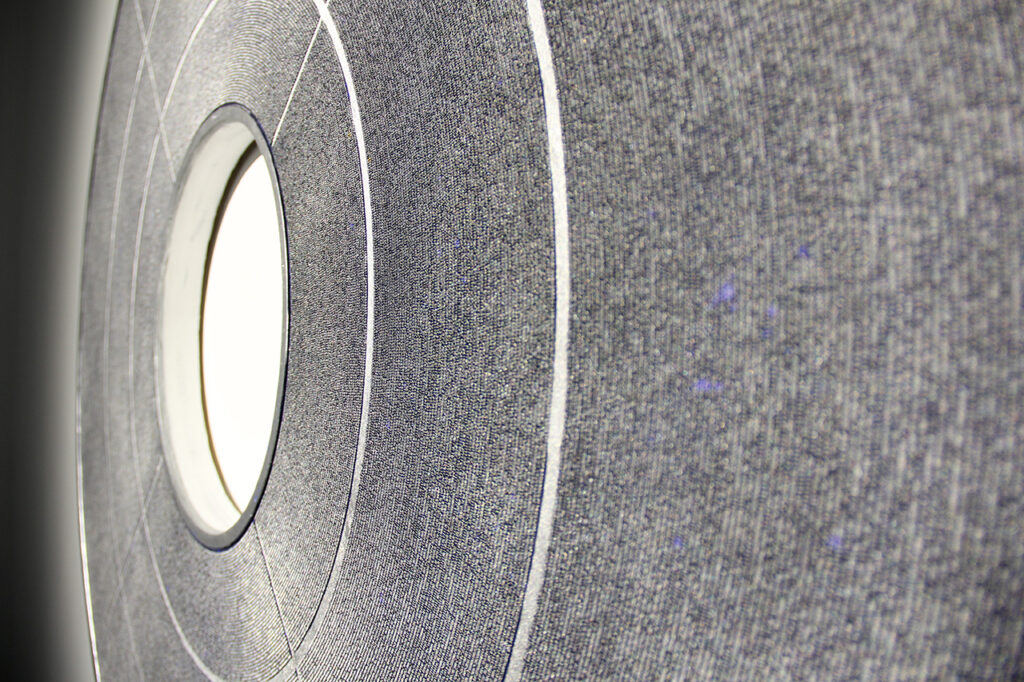
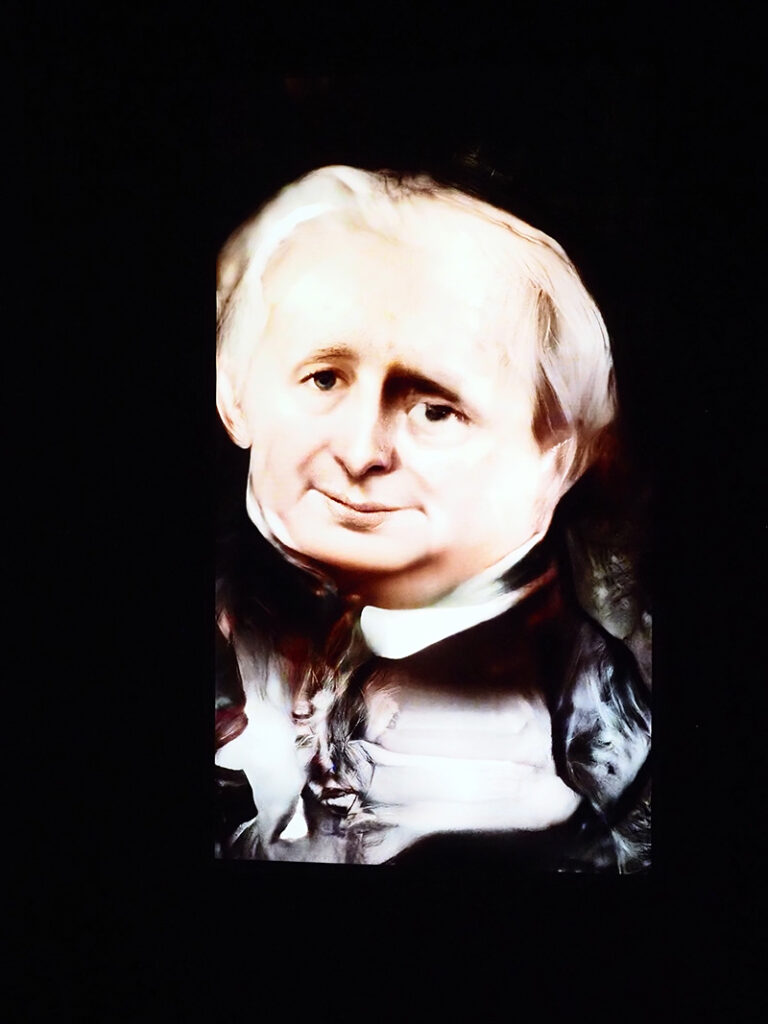
Works exhibited at Virtual Niche included a canvas from Robert Alice’s Portraits of a Mind series (above) and one of Mario Klingemann’s 79530 Self Portraits (below). Images: UCCA Lab
Despite its overwhelmingly educational nature, Virtual Niche also functioned as a crypto art marketplace, one which received backing from Kusama Network and Digital Finance Group. Some of the exhibited works were available for sale, a practice BCA will continue when it opens China’s first physical NFT art gallery in Beijing later this year. Digital art may be ascendent, but He clarifies, “the physical experience of actually being in an art space is important.” Cryptovoxels and web browsers, it seems, can only take potential collectors so far.
If other major museums are to bring crypto art into traditional galleries, similar curatorial tact and playfulness would go far in ensuring visitors leave less discombobulated than they enter. And in this sense, UCCA Lab made for an ideal NFT launchpad in China: it’s a space familiar to the capital’s young artsy crowd and ever-focused on staging tech-centric exhibitions such as its recent AI art show with Baidu, China’s Google, and frequent collaborations with Huawei, the technology giant.
Then again, it’s deeply ironic for BCA to so artfully educate an audience on all things crypto, given viewing, crafting, and trading NFTs in China often requires bypassing the Great Firewall using a virtual private network (VPN) — a hiccup that occasionally prevented some works from being fully displayed.
At the same time, the world of crypto enjoys a burgeoning following in China, from speculative investors, to leading hardware mining companies such as Bitmain, another of the exhibition’s sponsors, to a wave of young digital artists, many of whom BCA spotlighted. The government, while wary of cryptocurrency, has been researching and investing in blockchain technologies for close to a decade, with one output being the development of a central bank currency, the digital yuan, which was trialled successfully across major Chinese cities in 2020.
What might widespread use of the digital yuan mean for BCA? Probably little, given the currency isn’t fully decentralized, unlike the bitcoin and Ethereum it accepts online. For now, considering VPNs won’t be obsolete anytime soon, NFTs have just the opportunity to take root and gain traction across the country — a course that UCCA Lab’s exhibition is banking and urging on. Where crypto goes from here is a thing to be watched.

